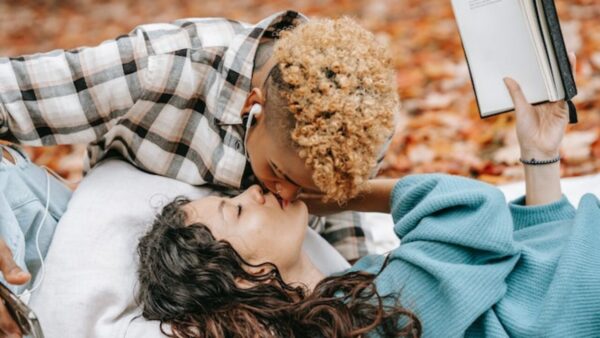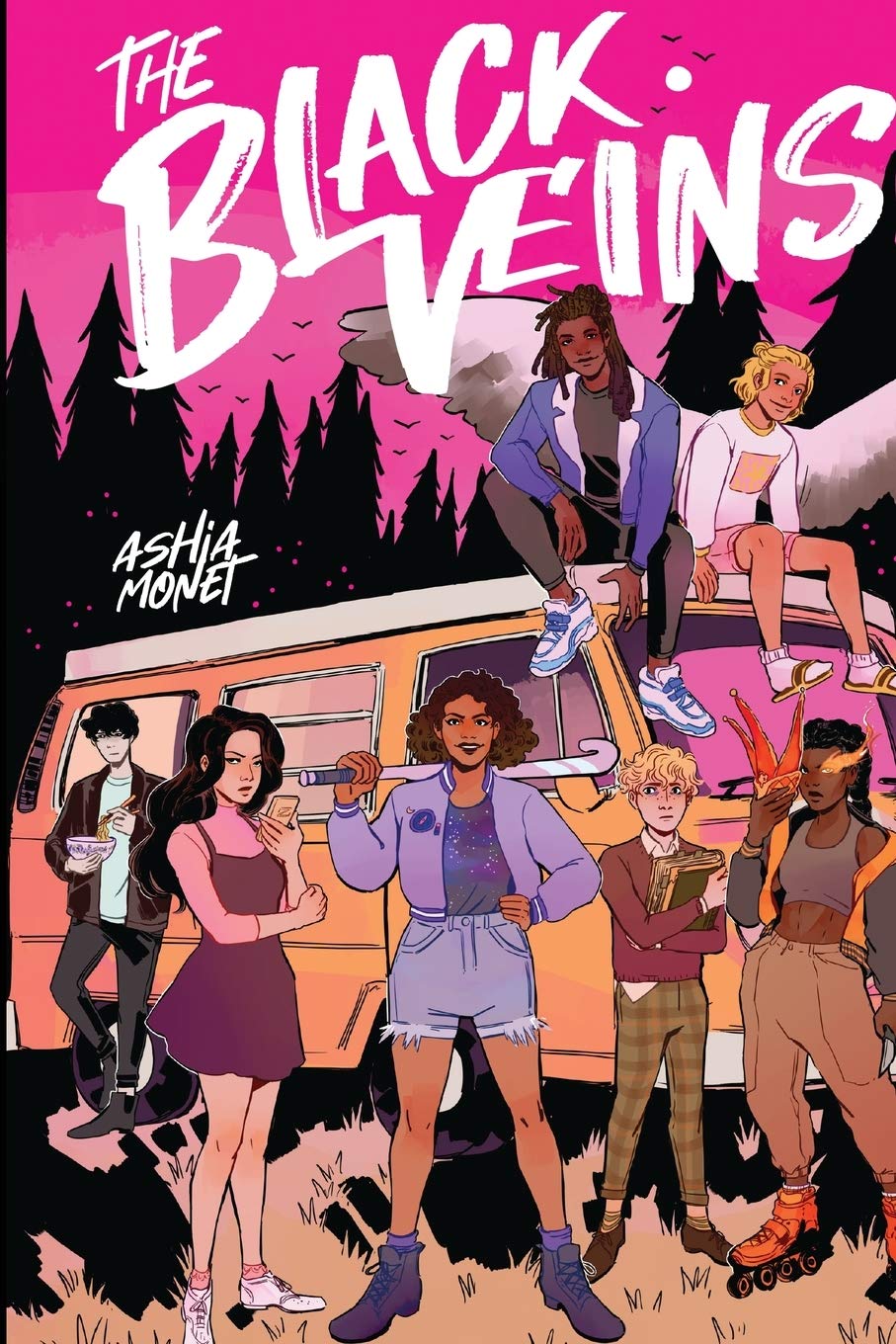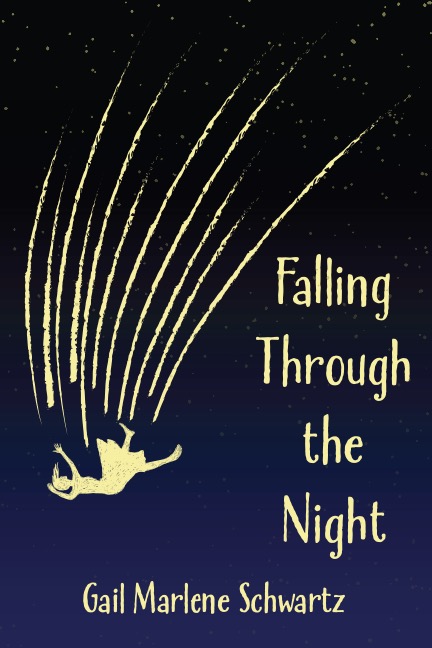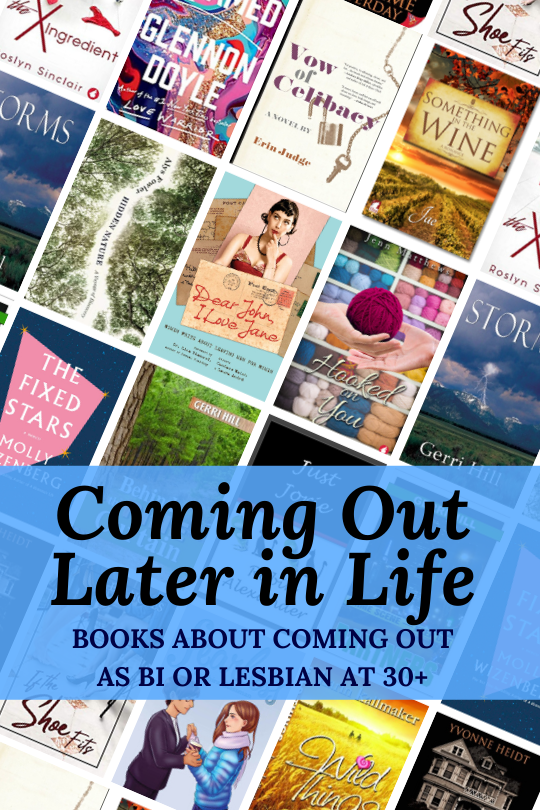
Hanging up in my living room is a canvas print of the cover of Satan Was a Lesbian by Fred Haley, and let me tell you, the illustration is exactly as over the top as the title is. It’s a perfect example of lesbian pulp fiction, a category of lesbian literary history I am fascinated with (which is why I collect them). But it’s also emblematic of why the question “Do queer books need a happy ending?” is so complicated.
Queer representation in mainstream media, whether in traditionally published books or TV shows, is still relatively new. Historically, queer characters have served a few functions, including the “monstrous lesbian” that seduces the innocent feminine woman, or the flamboyantly gay male side character who acts as comic relief. Then, there were lesbian characters meant for straight men to sexualize.
In the 1950s and 60s, pulp paperbacks were made possible by cheaper printing processes, and there was an explosion of titillating titles on drugstore racks–including lesbian pulp fiction. The assumption was that they were meant to be read by straight men, and many if not most of them were also written by straight men. Still, they were crucial to lesbians and other queer women of that time period, because for many people, it was their first exposure to the concept of lesbianism, and it suggested they weren’t alone. There were also queer women writing these books, sneaking in positive representation in.
What makes lesbian pulp relevant to this question, though, is that under obscenity laws of the time, the lesbian characters had to be punished. You could write a lesbian book just as long as it was meant to serve as a warning. They would often end with one or both women being killed, or being institutionalized, or one leaving to be with a man.
Relatedly, the first queer characters to show in TV and movies were generally villains–often murderers. This is the legacy of queer representation in media: if you found anything with queer representation, it was going to punish the queer character in the end, or they were gonna be the villain.
And this didn’t end in the 60s. The “Bury Your Gays” trope is recently named because of how often queer characters are killed off at disproportionate rates–especially queer women. In 2016, the death of Lexa in The 100 brought this issue to the forefront, as yet another queer woman character was a TV casualty–and in a death disturbingly mirroring Tara’s untimely demise in Buffy the Vampire Slayer 14 years earlier.
—–
If you find posts like this useful, help us keep the lights on by supporting the Lesbrary on Patreon or buy me a coffee at Ko-Fi!
—–
It’s really only been in the last handful of years that queer books started to become more mainstream. Even then, it started with cis white allosexual gay male characters in YA, and very slowly was any other representation included. When I first started the Lesbrary in 2010, it was easy to keep up the handful of bi and lesbian books published by the Big 5 publishers every year. It’s only been in the last year or two that sapphic books have begun to catch up with queer men books in mainstream publishing.
Obviously, we still have a long way to go in terms of representation of the entire LGBTQIA2S+ community, especially intersectional representation, but it is a huge improvement. In the very beginning of queer YA, they were considered “issue” books–a “very special episode,” but in book form. They generally focused on coming out and dealing with homophobia, and they may have a bittersweet ending.
Then came books like Boy Meets Boy, which were beacons of light that were a real departure from previous depictions. We started to see more books where queer characters could have happy endings. And later, as more books like Simon vs the Homo Sapiens Agenda came out, there seemed to be a reaction against “Bury Your Gays” and depressing queer media in favour of lighter, more celebratory queer books.
Now, we’re at interesting point in mainstream queer lit (because smaller presses and self-published work has been doing this for decades) where more complicated narratives in queer books are beginning to surface. We’re seeing books that are neither solely about homophobia and suffering or perfect utopias. We’ve got queer horror and thriller books. We’re seeing books that explore with how race and culture can intersect with homophobia and with queer identity. And with that has come a backlash to books that don’t have a happy ending.
And that brings me back to my original question: do we still need queer books to have a happy ending?
Obviously, no one can dictate what all queer books have to be. There are books coming out with bittersweet and unhappy endings: that’s been happening, that’s still happening. But these books often see backlash as “bad representation.” Which is unfair, because there’s a difference between, say, a queer horror book that kills off some of its queer cast and a mainstream TV show that kills off its only queer character.
There is a subset of online readers on social media that is hostile to any stories that involve queer people and are dark or don’t have a happy ending. If that’s aimed at your own reading, that makes total sense: at some points in my life, I’ve only wanted to read happy queer books with a guaranteed happy ending. And there’s nothing wrong with only ever wanting that. The problem is when this preference becomes something aimed outward.
One of the consequences of attacking any queer book that has an unhappy ending or deals with dark subject matter is that this will be aimed at authors representing their own experiences: authors talking about their own community, upbringing, and culture. These same books can be life saving, especially for readers whose culture or race is rarely represented in queer media. Accusing these books of being “bad representation” just makes queer media more homogenous, pushing out anyone that doesn’t fit that mold.
But authors don’t have to justify why they’re writing dark or difficult queer books. They don’t have to make their own identity or labels public to get a pass to write those stories. Queer stories should exist in every genre, for every mood. That doesn’t mean you have to read them, but authors should be free to write them regardless. Critique the content, for sure: call out hateful messages and clumsy depictions. But leave space for queer books to be messy and to explore every facet of our existence.
I do want to give the caveat that readers should know what they’re getting into with a book, however. Don’t advertise a book as a fluffy queer romcom and then have one of them die at the end. But readers should be able to choose from a wide variety of queer books.
Unsurprisingly, I think the answer is that we need more of all of it. We need more happy, fluffy queer books, and we need queer books that deal with dark issues in a realistic way that maybe doesn’t always end happily. Personally, I don’t want to read about a straight person’s idea of what queer suffering is like, but I’m also not going to identity police authors. I want queer authors to be able to explore wherever their story it takes them. Dealing with those really difficult situations in stories can also help readers figure out how to survive it themselves, if it’s something that they’re going through. I also think we need optimism and happy endings and escapism. There should just be more of all of it: more queer representation, more queer books of every genre, of every variety, escapist and realist.
We need all of them, because the problem was never that there were unhappy endings. The problem was that there was no alternative. We need to see the whole messy, beautiful reality of queer life in our stories, including our tragedies and our triumphs.
This post was originally a Book Riot YouTube video.


